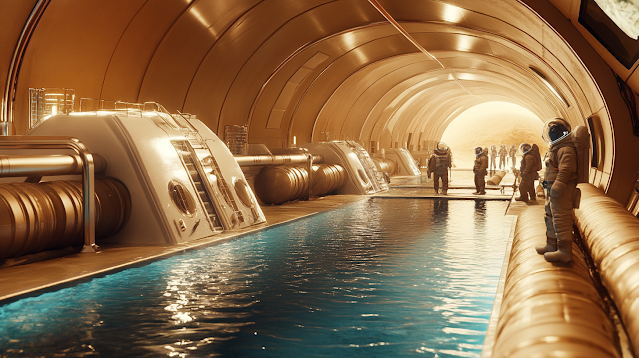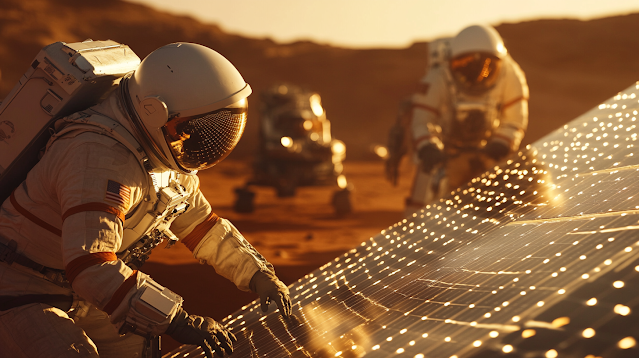Life on Mars: Opportunities and Challenges for Settlers
Part 1: Introduction and the Basics of Infrastructure on Mars
Introduction
Can you imagine life on Mars? Currently, there is active discussion about the possibilities of colonizing this mysterious planet. On the surface of Mars, radiation is high, and the temperature is low, but there are numerous cracks that lead to underground tunnels. These tunnels are free from radiation, and the temperature at the entrance reaches +24 degrees Celsius. These tunnels could be used to establish settlers. Let's analyze the main aspects of organizing life and infrastructure on Mars.
Transporting Settlers from the Surface to Tunnel Entrances
The transition from the surface to the underground tunnels can be organized using special airtight elevators or transport capsules that protect people from radiation and extreme temperatures. The transport time is only a few minutes, ensuring rapid and safe movement between levels. These capsules will be integrated into shafts connecting the surface with underground systems. Elevator shafts can also be equipped with decompression chambers to maintain the difference in atmospheric pressure. Such elevator systems can be complemented by autonomous vehicles for transporting goods and equipment, ensuring uninterrupted logistics within the colony.
Creating a Comfortable Environment in Tunnels
To prevent settlers from feeling "underground," artificial lighting systems that mimic daylight can be organized, as well as virtual reality technologies or projections to create the illusion of open spaces, natural landscapes, or urban streets. The architecture must take into account the psychological aspects of life in an enclosed space: lots of greenery (using hydroponics), large common areas, fluid lines, and natural colors for interiors. Additionally, ventilation and air quality control systems will be critical for maintaining the health of settlers. Diversity in design and regular updates to the interiors will help create a sense of dynamism and reduce psychological pressure caused by a monotonous environment.
Water Supply
Ice has been discovered on Mars, which can be extracted and purified to obtain drinking water. Recycling systems similar to those used on the International Space Station (ISS) can also be utilized for repeated reuse of water (filtering wastewater and condensing moisture from the air). The implementation of an atmospheric moisture collection system could also be considered, which, despite the low atmospheric density, could provide additional volumes of water. It is also important to have a water storage system to ensure a reserve in case of emergency situations.
Energy Supply
For the energy independence of the colonies, solar panels installed on the surface can be used. Since there is less sunlight on Mars, high-efficiency panels will be needed. Another option is to use nuclear reactors, which can provide stable and constant energy production, especially important for long-term missions. In the future, the use of wind energy could be considered, as strong winds exist on Mars despite the rarefied atmosphere. Combining various energy sources will create a more resilient and reliable energy system.































Комментариев нет:
Отправить комментарий